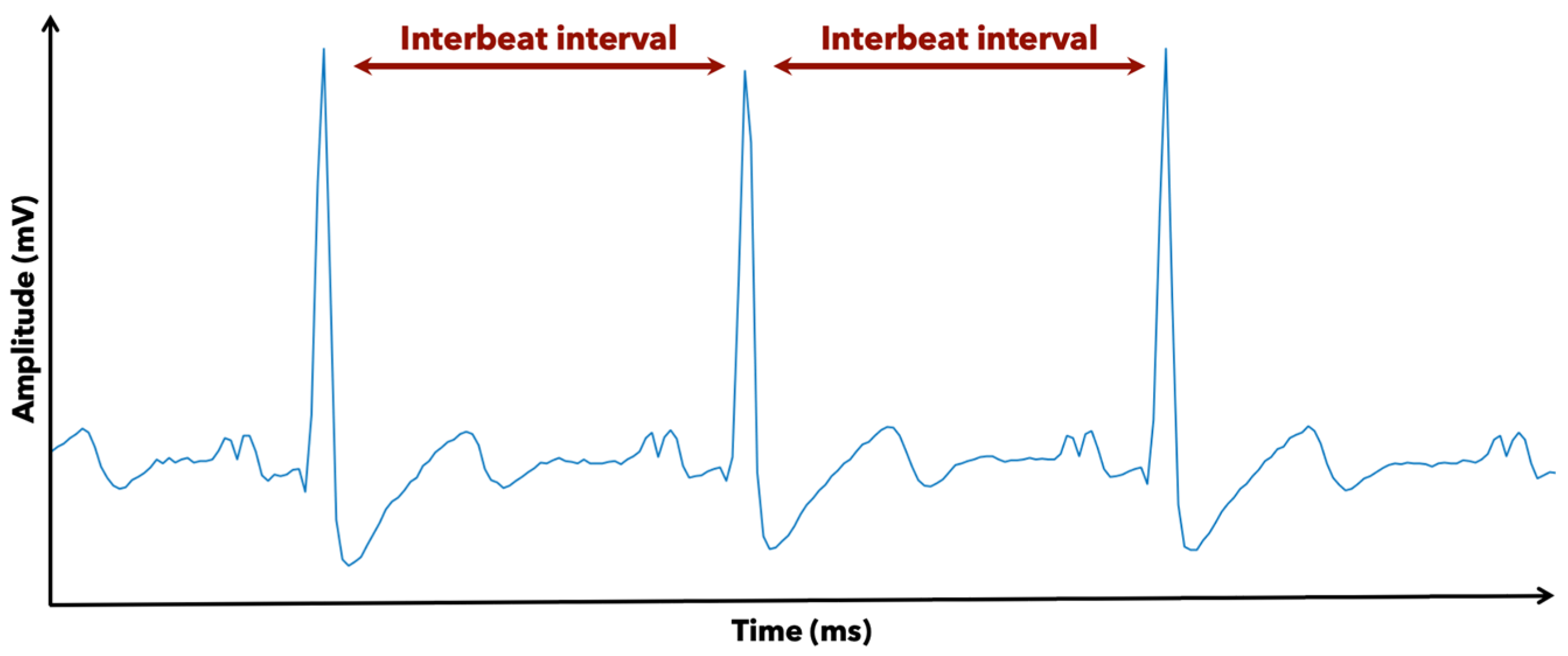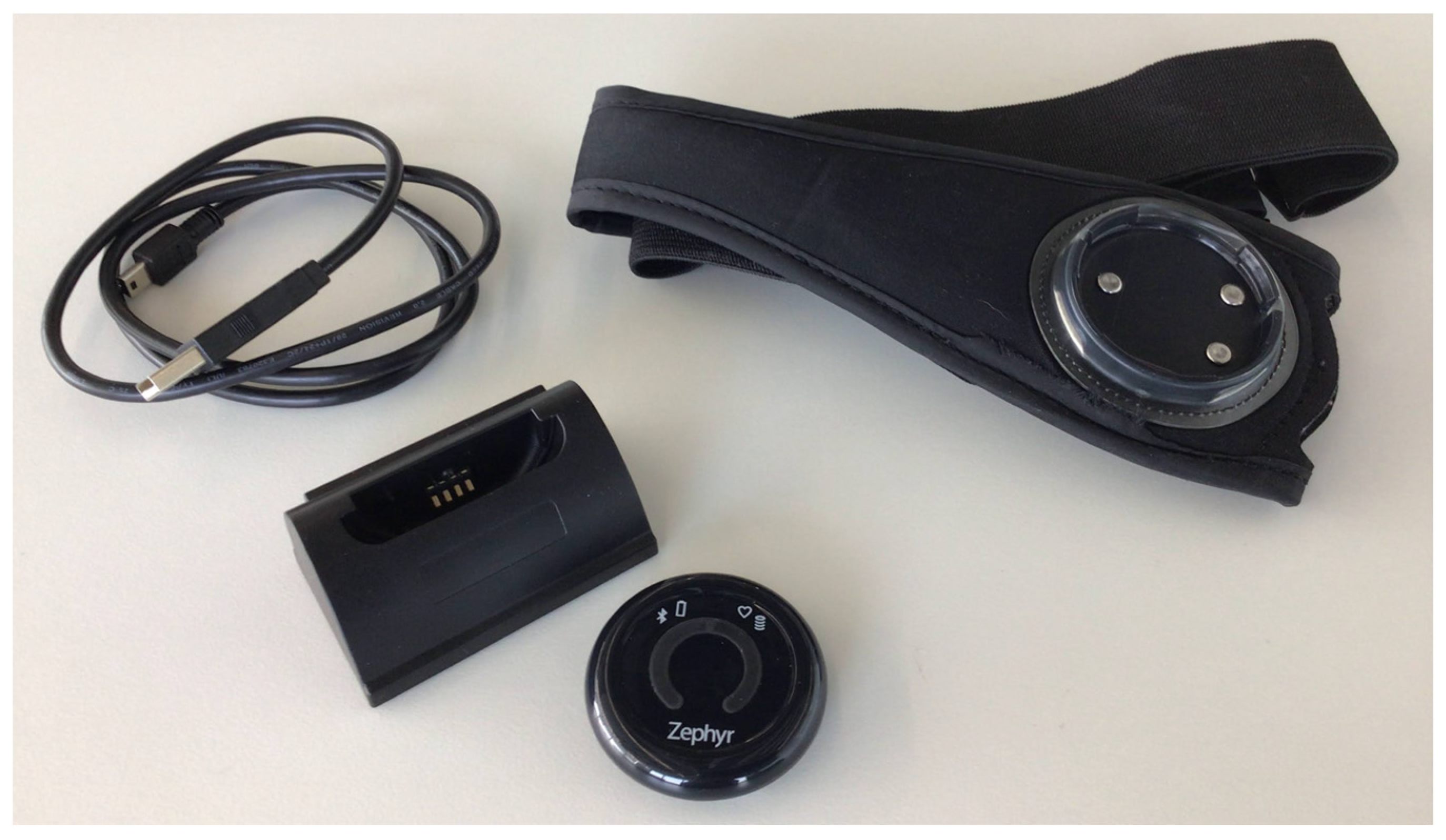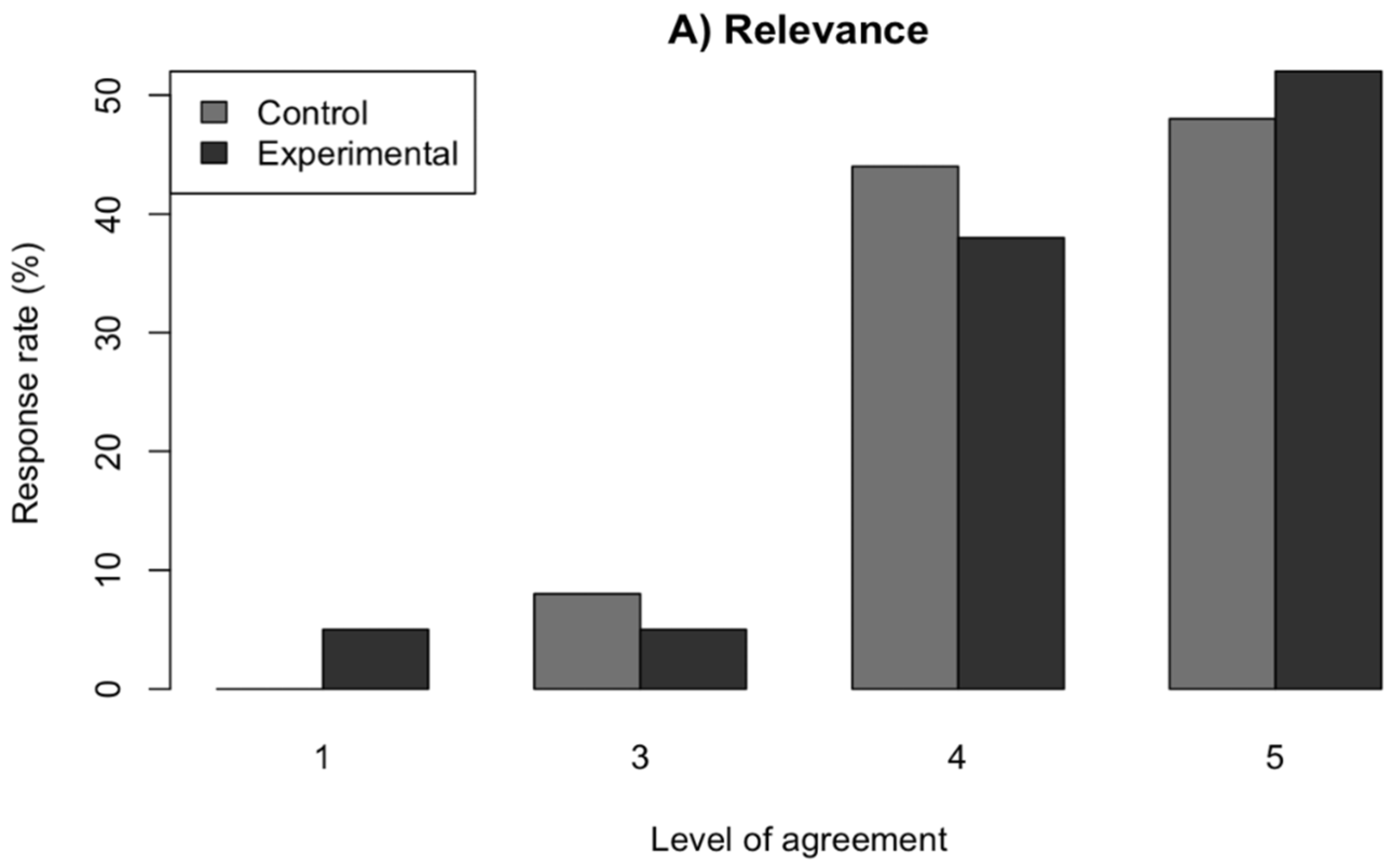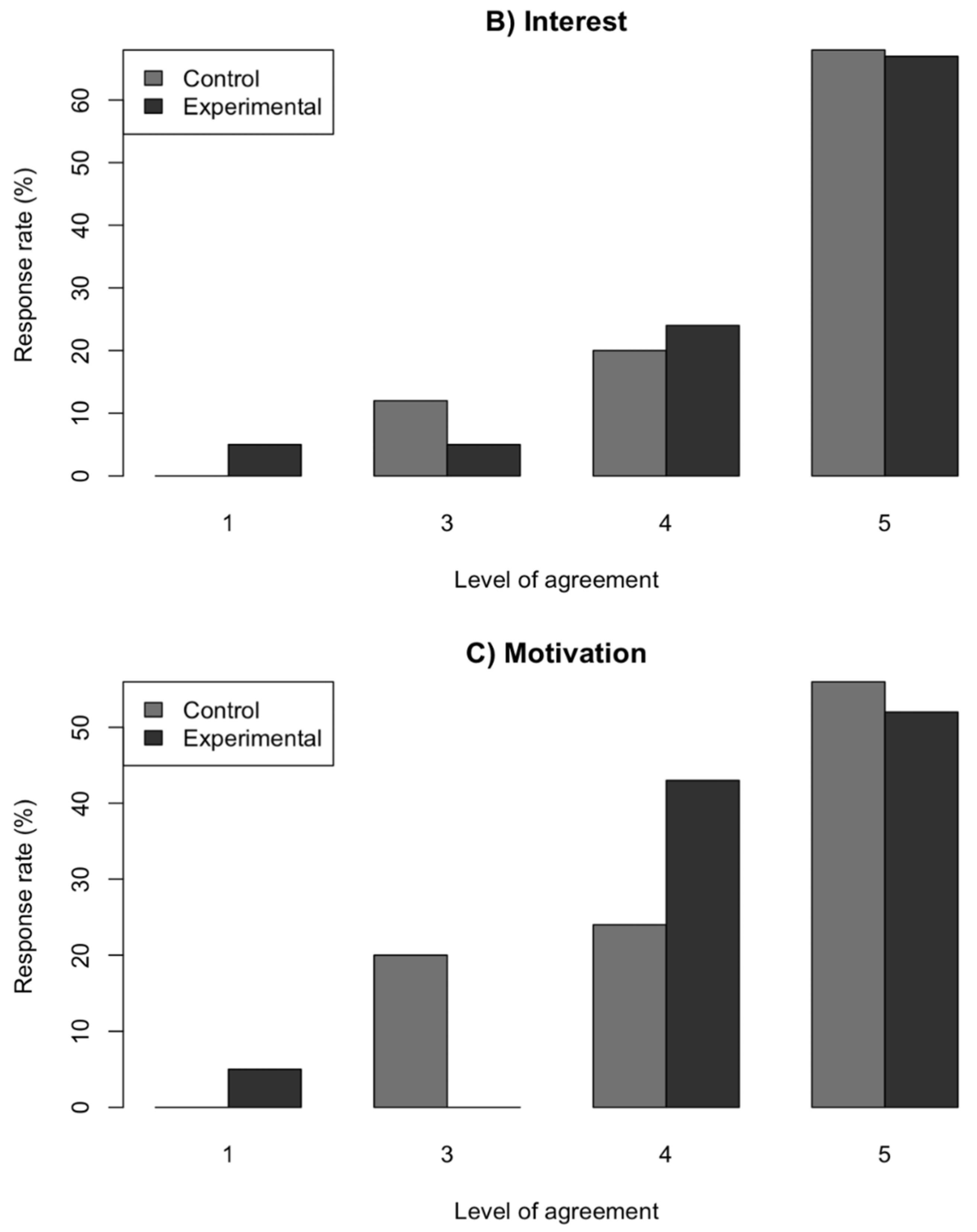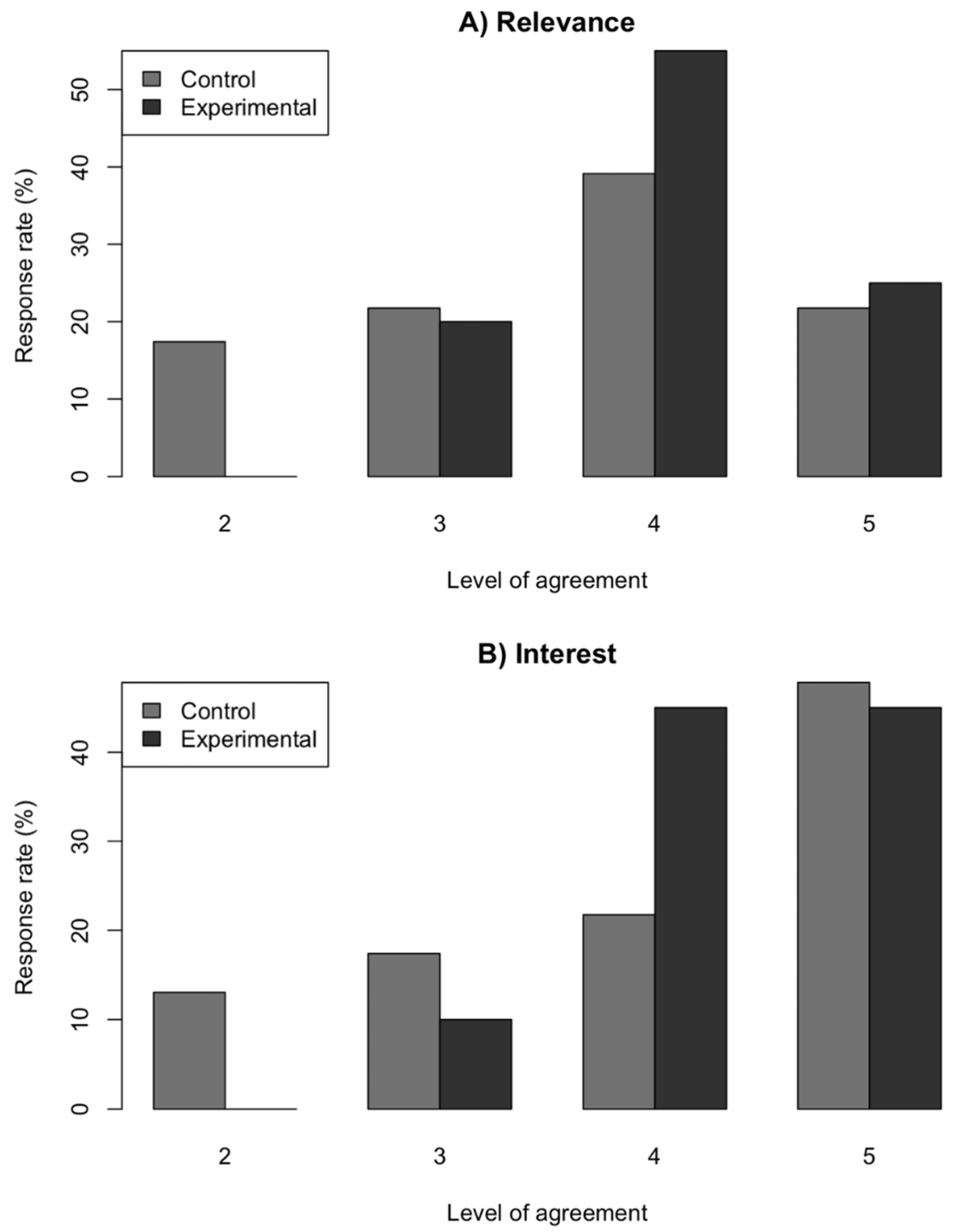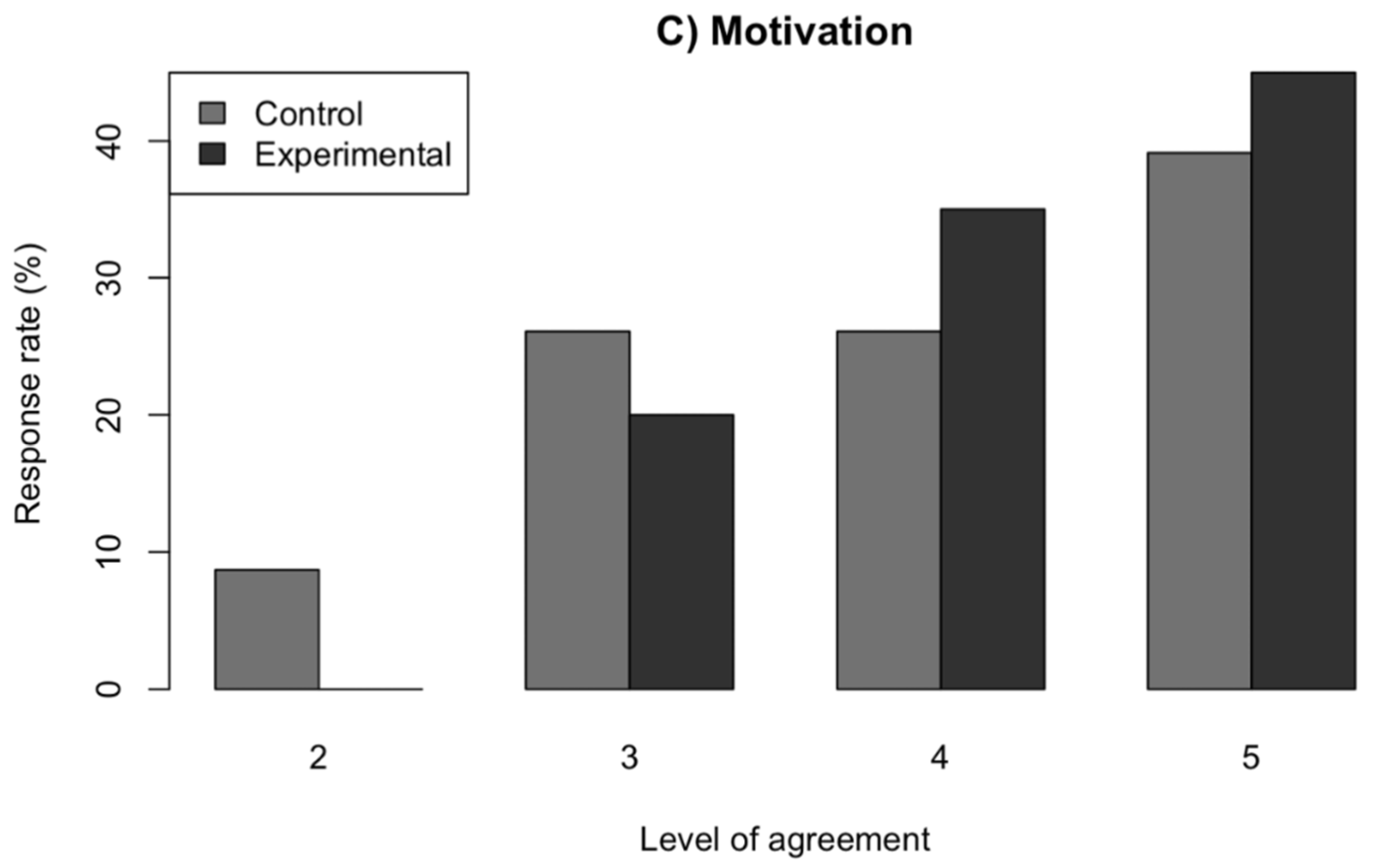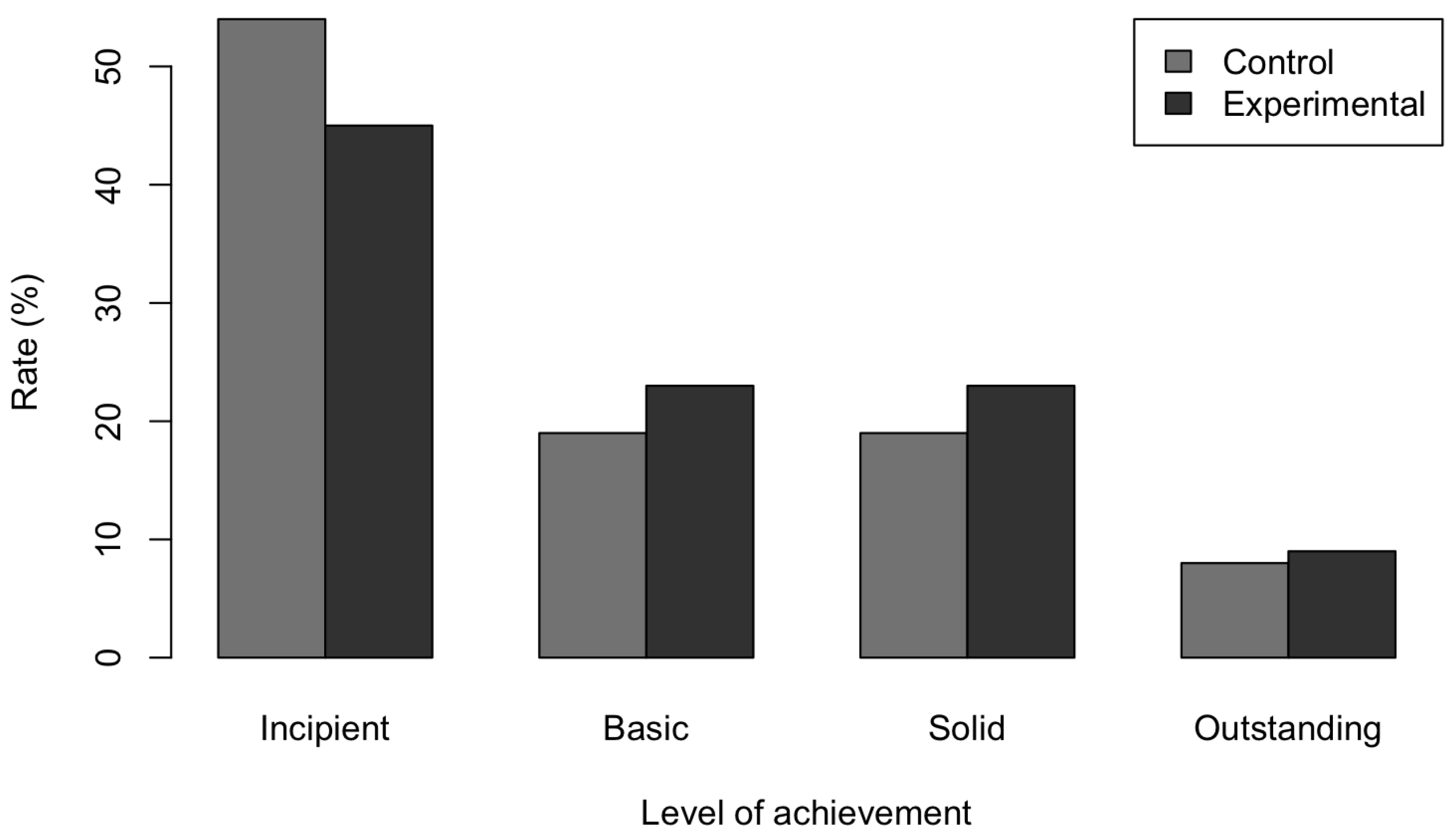The proposition of blended learning spaces for experiential learning supported by wearable technology and cloud-based collaborative development environments requires a clarification of the notions of relevance, interest, and the expected contribution to competency development in this work. These ideas are integrated into the fundamental assumptions behind the development of relevant learning experiences in the proposed blended learning spaces.
2.1. Relevance, Interest and Academic Performance
The term “interest” describes two different experiences: (1) an increased psychological state of attention, concentration, and affection experienced at a given time (situational interest), and (2) a durable predisposition to become involved with an object or a subject throughout time (personal interest) [
14,
15]. Situational interest combines affective (e.g., enthusiasm) and cognitive (e.g., perceived value) qualities produced by the characteristics of the situation (e.g., novelty) [
15]. Experiencing situational interest promotes learning by increasing attention and dedication to the subject [
16]. If it shifts to a personal interest, it is more likely for the student to dive deeper and become more involved in the topic. Thus, interest is a predictor of academic performance and, as a result, of competency development [
17]. Such a transition from situational to personal interest arises when the assignments are perceived as relevant [
14,
16]. In this sense, relevance in education is considered to trigger interest as there is usefulness or practicality in preparing people to perform their current or future jobs or tasks competently under certain existing circumstances and requirements [
8]. Therefore, using relevant situations in learning experiences becomes paramount for competency development as it highlights a purposive aspect of learning and the expected contribution students could obtain from their studies or what they learn. However, a question remains about the definition of “how to learn”, that is, the educational approach to facilitate students’ learning. To progress in this direction, different approaches might be considered. However, meaningful and long-lasting alternatives based on a constructivist student-centred approach are required [
18]. This view calls for “experiential learning”, which is claimed to be more effective than any other form of learning as it enhances the motivation to learn by supporting the active participation of students in the learning process to code and construct learning within their condition and reality [
19].
2.2. Experiential Learning
Experiential learning has been proposed to contribute to students’ learning in a meaningful and long-lasting way because of the emphasis on learning-by-doing and experimentation [
19]. Learning is considered to naturally occur as part of a continuous meaning-making process through personal and environmental experiences in which students develop interest and recognise relevance in their learning [
20]. Experiential learning involves a four-stage circular feedback process known as Kolb’s Experiential Learning Cycle, in which concrete experience (CE), reflective observation (RO), abstract conceptualisation (AC), and active experimentation (AE) take place in a continuous learning loop [
21]. Accordingly, two major interacting domains in which learning occurs can be recognised as part of the learning cycle. On the one hand, there is an intellectual or conceptual domain in which people think and reflect on a situation. On the other hand, there is an operational domain in which people experience and act in the situation. Hence, learning can be seen as a circular process composed of intellectual activities that guide students’ actions, whereas practical activities and tasks provide feedback for conceptual knowledge in a specific context. This idea is crucial for translating educational activities into experiential learning, considering both types of conceptual and practical domains of learning [
22].
Therefore, approaching learning from this perspective requires a different understanding and an action framework to conceptualise, organise, and implement meaningful learning activities as learning experiences linked to real-life environments and reflective practices. Moreover, experiential learning has become highly important as there is a current orientation in education towards CBL and competency-based education (CBE) to develop abilities in students through hands-on experiential learning activities. Experiential learning emphasises involving individual students in meaningful situations where they can build their knowledge from problem-solving or decision-making in real-world scenarios.
The ideas of experiential learning relate to other works promoting the active participation of students in such a way that they undertake a hands-on, learner-centred, collaborative, and situated type of learning [
18,
23,
24]. This type of learning calls for moving educational approaches from a knowledge-broadcasting type of teaching in which students sit and listen to a constructivist alternative in which students learn by executing tasks in a thoughtful way while immersed in a meaningful situation [
18]. The theory of experiential learning has been criticized for overseeing personal, psychological, and contextual conditions affecting, for instance, learning modes, learner types, learning styles, knowledge creation, and whether learning occurs in identifiable stages [
25]. However, it is also recognised for its popularity and wide use in teaching practice [
26].
2.3. Blended Learning Spaces for Biomedical Engineering Education
A learning space is commonly recognized as a location or physical place where learning occurs [
27]. This might be the case of a classroom, laboratory, or workshop. Learning spaces are claimed to integrate educational approaches, technology, and resources to develop learning outcomes [
28]. That is, learning spaces represent the way educators conceptualise teaching and learning [
29]. However, it is increasingly argued that learning spaces are primarily ineffective as learning environments, especially when referring to traditional classrooms [
30]. For instance, many Higher Education students in traditional learning environments cannot collaborate and apply much of what they have been taught. One possibility for this phenomenon is that classrooms are used to support the lecturing of content to passively listening students. Learning spaces should support effective learning in terms of active participation and collaborative work, considering the needs of learners, and facilitating learning wherever it takes place [
30].
Thus, learning spaces should transcend locations and physical infrastructure to incorporate the whole dynamics of learning in different types of venues or environments. As educational resources, learning spaces should also allow for the incorporation of devices that enrich and enhance learning. This is the case with information technologies such as computers, gadgets, and specialized software, but also for devices that leverage learning with remote/online web-based alternatives across diverse scenarios [
31]. Therefore, learning spaces must adopt a broader view away from the traditional, physical classrooms or academic locations. Instead, there should be a variety of real, virtual, hybrid, or blended learning spaces supporting learning synchronously or asynchronously in ubiquitous scenarios.
In science, technology, engineering, and mathematics (STEM) education in particular, several digital technologies have been proposed as didactic tools for enriching traditional learning spaces and facilitating active learning activities, thus improving the teaching–learning process [
32]. Among these technologies are mobile devices (e.g., smartphones and tablets), web-based learning platforms (see, for instance, [
33]), virtual environments (e.g., Second Life [
34]), digital games (e.g., Minecraft Education Edition), robots (e.g., LEGO Mindstorms NXT [
35]), virtual labs (see [
36] for a review on the topic), virtual reality (see, for instance, [
37]), and even social networks (e.g., Facebook [
38]). Previous studies have reported that these technologies are effective in improving learning outcome gains [
39], increasing students’ engagement and motivation [
40,
41], and fostering their cognitive and creative skills [
39,
42], among other benefits [
32].
In this work, we consider learning spaces as those venues or environments where purposeful learning occurs, inside or outside of the classroom, and which support the contact, interactions, communications, and collective (or individual) actions that students undertake to produce their learning outcomes in different instructional formats over time [
12]. This conceptualisation is extended to experiential learning spaces for BME education in which students can learn about improving health and the quality of life in diverse and relevant simulated, contrived, or real-world scenarios or situations. Learning spaces, in this case, can exist within dedicated teaching facilities within universities, healthcare institutions, or any suitable daily-life location. Accordingly, this view calls for adopting the necessary technologies and resources to support learning inside and outside classrooms, laboratories, and universities.
One possible strategy for undertaking this conceptualisation of learning spaces involves using Information and Communication Technologies (ICT). For example, a study on ICT used in higher education by Zweekhorst and Maas found that students deemed lectures using ICT tools more engaging [
43]. Moreover, Cuetos Revuelta et al. found that faculty attributed a high capacity for students’ motivation and stimulation to using ICT in teaching [
44]. Therefore, this work leverages the potential of using cloud-based collaborative development environments such as Google Collaboratory to foster students’ motivation and engagement.
A further possibility involves the use of wearable devices. Wearables refer to “any miniaturized electronic device that can be easily donned on and off the body, or incorporated into clothing or other body-worn accessories” [
45]. Wearable technologies are traditionally used to measure and monitor vital human signs using head, wrist, or chest-based gadgets for well-being, leisure, sports, and healthcare applications in different situations and under various conditions. Nevertheless, there is a growing interest in using and deploying them to facilitate teaching and learning, as they are regarded to help collect data across multiple disciplines and improve students’ satisfaction and learning [
46].
In healthcare, wearables have been successfully used to improve patients’ health literacy, treatment engagement, adherence to indications, medical follow-ups, and sociality, among others [
47]. However, limitations exist because of their reduced scope of monitoring variables and the accurate measurement of health markers. As these limitations are overcome, wearables have a promising future in expanding the clinical repertoire of patient-specific measures and becoming an essential tool for precision health [
47]. In the meantime, there is an increasing interest in wearables as an emergent technology and for training clinician professionals.
In higher education, wearables have been identified among the technologies transforming teaching practices, given their potential to support improved learning experiences [
48,
49,
50]. This technology improves students’ interaction and engagement and enables the implementation of active learning [
48]. Furthermore, the potential of wearables to facilitate distance teaching and learning and to compensate for the absence of physical learning spaces (for instance, during the COVID-19 sanitary restrictions and requirements for social distancing) has also been signalled [
50]. In contrast, a high cost and potential privacy issues have also been signalled as drawbacks of their use in education [
48,
50].
In BME education, wearables can be used to train students to collect data and learn about their use, applicability, and limitations. For instance, Kanna et al. incorporated a custom-made wearable device in classroom activities to allow students to collect and analyse their electrocardiogram and breathing data [
51]. According to the authors, most students considered the course intellectually stimulating, enabling them to learn concepts not practically covered in the curriculum, and enhancing their creativity and curiosity [
51]. However, the full potential of wearables was not exploited since they were only used in the classroom.
Therefore, the use of wearables in this work is demonstrated in three parts. First, wearables are considered part of a learning space as an educational resource to take learning outside the classroom and universities into everyday scenarios. Second, wearables improve students’ learning experience by carrying out hands-on activities to increase their interest, motivation, and learning relevance. Third, wearables are used to collect data for disciplinary learning and research purposes within BME education.
